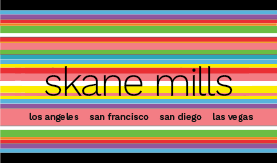Skane Mills represents motor carriers in the areas of trucking and transportation. We represent a variety of companies including small trucking companies, private fleet operators and shipping companies. We have an understanding of the wide variety of regulations that cover motor carriers at both the state and federal level and handle cases involving death, catastrophic injury including traumatic brain injury, cargo losses, property damage and regulatory compliance in all areas of trucking and transportation. We have a strong team of attorneys, accident reconstructionists, investigators and independent adjusters available to immediately respond upon notice of catastrophic events.
We represented a trucking company and employee in a wrongful death case. One wrongful death action was filed by two adult daughters of the decedent. Another wrongful death action was filed by the decedent’s live-in girlfriend and her teenage son. They were eventually consolidated. The decedent was riding his motorcycle at 78 mph down a side street with a posted speed limit of 40 mph when our client, a trucking company and their driver, allegedly made an illegal U-turn driving an 18-wheeler in front of the speeding motorcycle. The decedent was unable to stop and died at the scene. Both sets of plaintiffs made policy limits demands. We were able to develop facts that showed the decedent had little or no contact with his adult daughters, and that he had paid child support for one of them until she reached the age of eighteen, but evidently had no contact with the other one. Still, they could have potentially recovered for the loss of love and affection of their deceased father. As to the girlfriend, she was claiming rights as a putative spouse, but the court records showed she was in fact married to someone else, while living with the decedent. Her teenage son may have been able to recover under California law regarding a minor who receives at least 50% support from the decedent. However, the teenage son was being supported by his father and the decedent had been off work with a knee injury, so it was unlikely that the 50% support threshold could be established. This potential multi-million dollar case settled with a very favorable settlement of $300,000 for the daughters and $15,000 for the girlfriend and her son.
Our client, a well-known pizza franchise and its driver, were defendants in a rear-end automobile personal injury case. The plaintiff claimed over $1 million in personal injury damages when a pizza delivery man rear-ended her truck while en route to delivering two large pepperoni pies in Apple Valley, California. The general rule is, whoever rear ends another vehicle is presumed to be at fault for negligent driving. But California is a comparative fault state. If the plaintiff did something to cause the accident, the percentage of fault borne by our driver and his employer could be minimized. While investigating the facts of the case, we turned up a police call sheet, but no police report. The call sheet listed the name and cell phone number of a young woman who had called police while she watched the rear-end accident unfold. After speaking briefly to her on the phone, we scheduled the eye-witnesses’ deposition. The eye-witnesses, who was waiting at a stop light opposite of where the plaintiff’s vehicle had stopped, saw the entire accident in plain view. The testimony of the eye-witness was that it was the plaintiff, not our pizza delivery guy, who caused the accident. The eye-witness saw the plaintiff perform an illegal rolling stop at her stop sign, otherwise known as a “California stop,” in plain view of the pizza delivery car that had the right of way through the intersection. After the rolling stop, the plaintiff inexplicably and suddenly slowed down, stopping in the middle of the road, right in front of the pizza delivery car that was already in the intersection on the cross-street. Given this circumstance, the pizza delivery driver had no opportunity to avoid the accident. Following the deposition of the eye witness, the plaintiff’s medical records were also analyzed, the result being her medical bills were a fraction of what was claimed in written discovery, and not all of the medical bills even related to the accident. With this evidence in hand, the case proceeded directly to settlement without any further discovery. The plaintiff accepted a small fraction of her original demand to drop her case.
